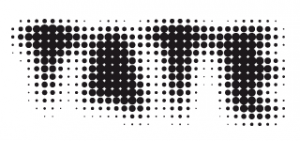Surveillance is the close monitoring of a person’s behaviour or activities to gather information about them which can be used to influence or manage decision making. In the context of espionage, surveillance comes in many different forms. They are often used in combination to obtain the necessary confidential information and intelligence which is desired by the adversary.
Whether you’re interested in the different types of surveillance from a personal perspective, or you’re exploring the techniques used to assess a threat to your or your organisation’s privacy, here we outline the different types of surveillance.
Covert vs Overt Surveillance
Covert surveillance refers to techniques used which are hidden or disguised so that the subject does not know they are being monitored or watched. Overt surveillance refers to the use of devices which are visible and recognisable such as a signposted CCTV system.
Electronic & Technical
With the advancement of electronic devices in becoming smaller, more powerful and more connected, electronic and technical surveillance has changed immeasurably to support the surveillance of individuals, homes, offices, and even whole cities. Here are the common forms of technical surveillance:
Video
The use of cameras, large and small, have been used for monitoring and surveillance for many decades. The introduction of CCTV as early as the 1920s, originally in Moscow for Kremlin state surveillance, has grown to an estimated 350 million CCTV cameras as of 2016. They are often connected to a recording device or IP network. One of the biggest advantages and uses of CCTV has been its use for crime prevention and solving.
Cameras have become increasingly smaller and higher quality, leading to the ability for them to be used secretly, on-the-go and to be hidden. The smallest spy cameras now deliver HD quality video at only a few millimetres.
Audio
Listening devices, commonly known as ‘bugs’ or ‘wires’ were first designed and used as early as 1906. Since their early conception with a microphone and remote receiver, commonly now they consist of a miniature RF radio transmitter and receiver, as well as low cost but highly effective GSM bugs. The sophistication and power of these devices are increasing, and new techniques are being developed such as lamphone. For more information on the common types of listening devices, read our blog post.
Wiretapping or telephone tapping of phones is commonly illegal across the world except for lawful interception. However, mobile phone data is constantly collected and stored, including location information. While modern mobile phones are harder to monitor due to encoded and compressed transmission, a ‘man in the middle’ attack is possible using an IMSI-catcher.
Cyber
Cyber and internet surveillance is the monitoring of computer activity or of the data which is being transferred over networks and the Internet. Surveillance can be legitimate, for example by businesses to ensure resources are not misused and compliance with corporate policies, or for better tailoring of marketing messages. While the tightening of GDPR and privacy laws have led to more power being given to the individual to decide who should store and access their data, the electronic trail of transactions and interactions we have in our modern lives can be aggregated to create a detailed profile and analysis through data mining.
Surveillance which is done covertly or illegally may include the gathering of data as detailed but without the user’s permission, social network analysis (data mining social media networks for intelligence on individuals or groups), cyber espionage through the use of malicious software and hacking, and even methods such as keystroke listening and electromagnetic reviews.
With the advent of the IoT, always-on listening devices such as smart speakers offer a real threat in many homes and leave users potentially exposed to eavesdropping.
Human
Human surveillance has long been a tool for the private investigator or spy. In most cases, the surveillance is covert, using techniques to monitor an individual or group, or even infiltrate an organisation without their knowledge.







